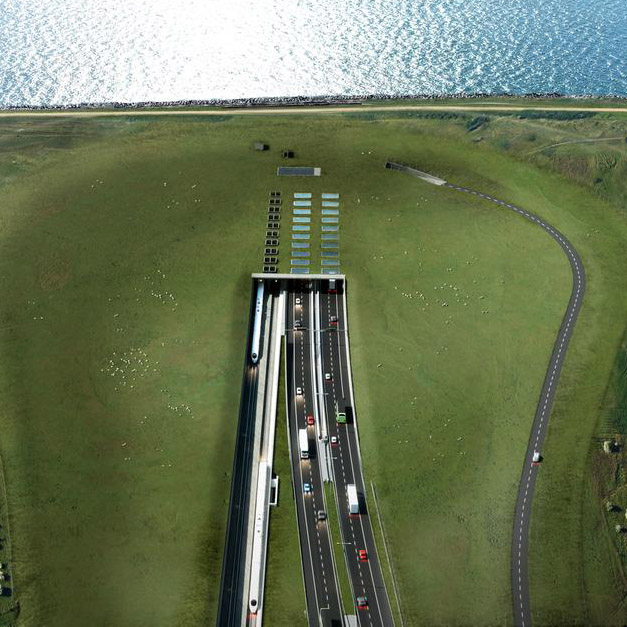

Underground spaces that are EV fire-ready thanks to AI-backed camera software? Immersed road projects such as Lower Thames Crossing and Fehmarnbelt showcase the latest in best practice and new tech. By Craig Thomas.
Join other savvy professionals just like you at CIHT. We are committed to fulfilling your professional development needs throughout your career
New technologies and best practices are reducing risks and improving safety for immersed road projects.
A change in the vehicles that will be driving through road tunnels in the coming decades will require new approaches to dealing with the biggest risk – fire.
Dave Cook, operations manager for the Lower Thames Crossing says: “The major risk that you're always planning for is a major fire or explosion within the tunnel. Previously, we would've looked at internal combustion engines being part of the fire, but now we're looking at alternative fuels – electric vehicles with lithium ion batteries or hydrogen. It's still a fire risk, but fire may develop or present itself in a different way, affecting how you might respond.”
This is supported by Jens Ole Kaslund, technical director for the Fehmarnbelt tunnel between Denmark and Germany: “EVs won’t affect the way we construct the tunnel, but it means that the emergency services need other tools to extinguish fires, such as bringing in a container with water and then lifting the burning car into it, to make sure that the battery fire is extinguished fully.”
CCTV and networked cameras can now be deployed the length of a tunnel to help improve safety. Along with heat detection technology, cameras backed up by artificial intelligence software can provide tunnel authorities with an early warning in the event of a problem. Kaslund says: “You can’t watch all 18km with your eyes, but with software to help you, you can stay on top of anything abnormal and intervene to ensure that it doesn't turn into a dangerous situation.”
Cook adds: “With automatic incident detection, we’re able to get an immediate view of exactly what's going on and what we need to do to launch a first response, and then maintain close monitoring for any escalation.”
Large tunnel construction projects have a significant impact on the environment, so mitigating those effects is now a major priority.
That said, the very existence of projects such as Fehmarnbelt create environmental benefits. As Kaslund said: “The tunnel that we establish is a shortcut for trains from Hamburg to Copenhagen today, taking 160km off the route. It’s a similar story with the road tunnel. After we open, a reduction in the CO2 footprint will help to improve the climate. After its construction, our goal is for the tunnel to be carbon neutral.”
Tunnels, by their very nature, are huge energy users, thanks in part to the need to light them. As well as replacing traditional sodium-based lighting with more efficient LEDs, the Lower Thames Crossing is introducing other measures. “There are a number of things we can do in all different areas, such as ventilation systems with soft-start motors to help smooth out and reduce energy consumption. We’ll also continue to look for best practice and innovation, through our detailed design process, to reduce our anticipated energy consumption further,” says Cook.
Keeping costs as low as possible, while incorporating sustainability concerns, and the highest levels of safety is always a challenging procurement balancing act.
To resolve this internal tension, tenders for the Fehmarnbelt tunnel project are being assessed with additional quality thresholds. “For the latest tenders, we had put in both a very high requirement for how climate-friendly the construction should be and how low the power consumption should be. There are four or five competitors around the world that could bid, but then on top of that, we have been giving an extra bonus for those who could do it even better. We had tried to raise the requirements as high as we dare, to have the competition. That actually helps them: all three bidders were above our aggressive limit, so they raised standards even further above the market level.”
“On the Lower Thames Crossing we’re taking a systems engineering approach to ensure full traceability and deliver a tunnel that is demonstrably safe,” says Cook.
Interested in road safety? CIHT has compiled an information hub – available here.

Photo credit: Femern A/S
Interested in road safety? CIHT has compiled an information hub – available here.
Join other savvy professionals just like you at CIHT. We are committed to fulfilling your professional development needs throughout your career
{{item.AuthorName}} {{item.AuthorName}} says on {{item.DateFormattedString}}: